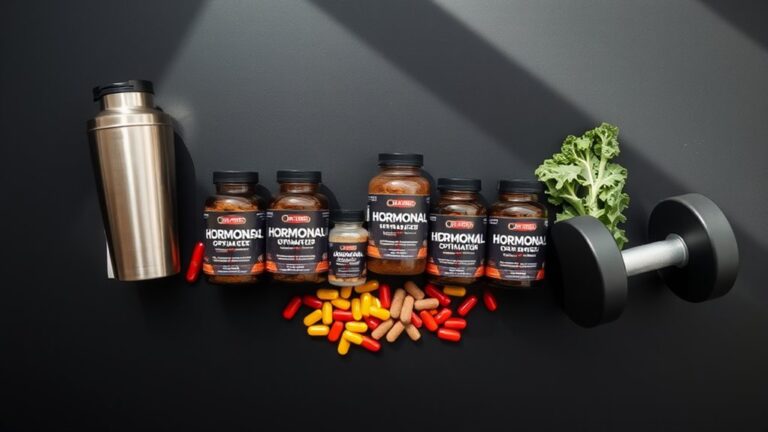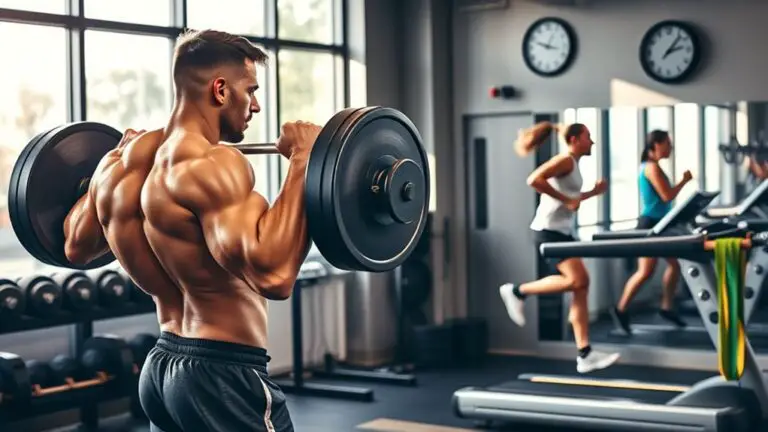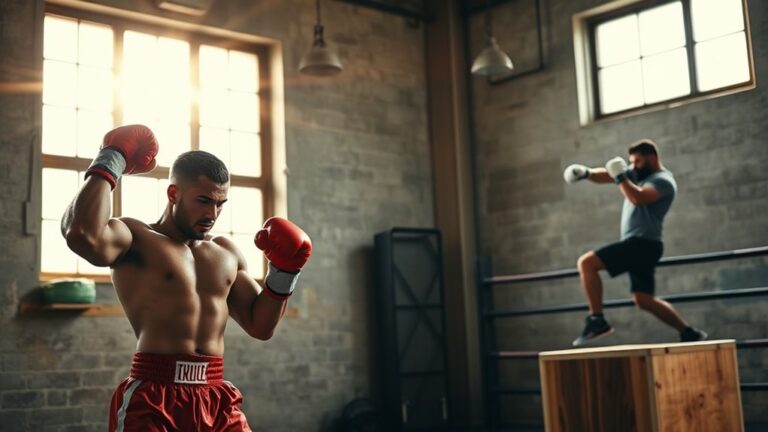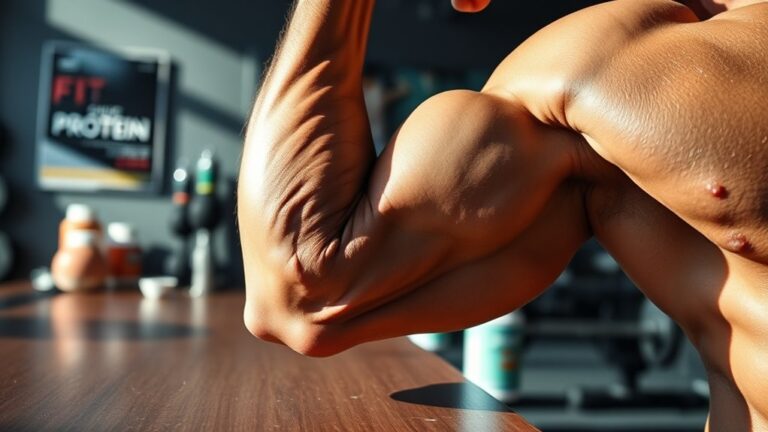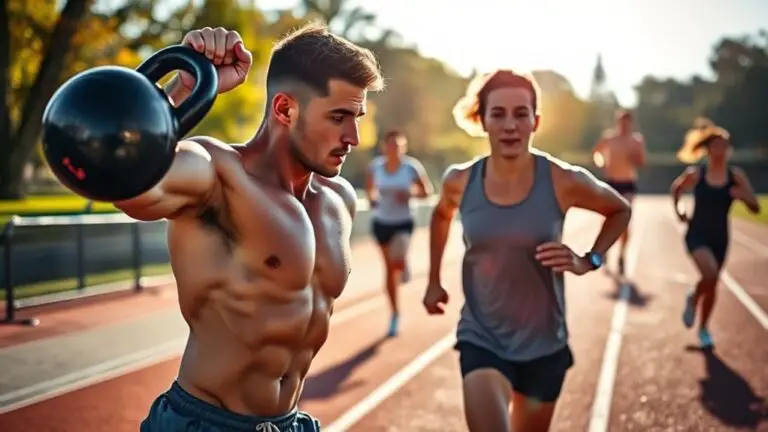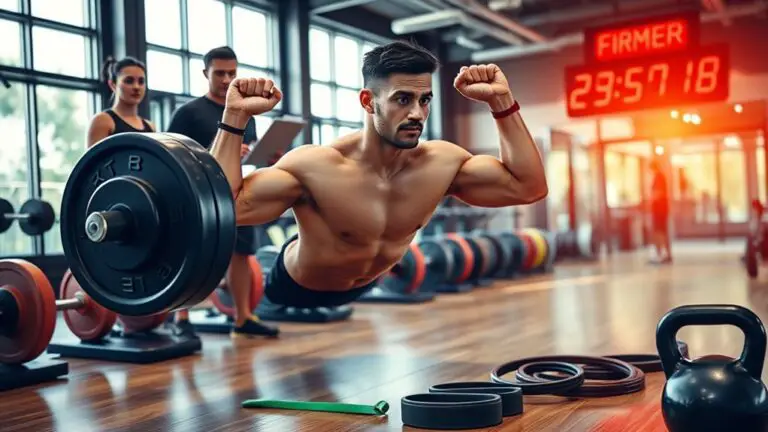The Role of Strength Training in Kayaking and Rowing

Strength training is essential for your performance in kayaking and rowing. It enhances power output, improves endurance, and aids in injury prevention by strengthening key muscle groups such as the core, upper body, and legs. Targeted exercises, like squats and deadlifts, develop essential grip and functional strength needed for efficient strokes. By integrating strength training with technique work, you optimize your training results. Discover more about effective strategies and common pitfalls to enhance your athletic journey.
Understanding the Importance of Strength Training

While many athletes focus primarily on technique and endurance, understanding the importance of strength training in kayaking and rowing is vital for enhancing overall performance. Strength training benefits you by improving power output and efficiency during strokes, which directly translates to better speed and endurance on the water. By incorporating resistance training into your regimen, you’ll develop the muscular endurance necessary for prolonged paddling and rowing sessions.
Training frequency plays an essential role in maximizing these benefits. Research indicates that a well-structured strength training program, performed two to three times a week, can greatly enhance muscle coordination and reduce injury risk. By balancing strength workouts with your technical training, you can guarantee peak muscle recovery and growth. Ultimately, integrating strength training into your routine not only sharpens your competitive edge but also fortifies your body against the demands of kayaking and rowing, leading to improved performance outcomes.
Key Muscle Groups for Kayakers and Rowers
To maximize your performance in kayaking and rowing, you need to focus on developing upper body strength and core stability. Research indicates that strong shoulders, arms, and a robust core are essential for efficient stroke mechanics and overall endurance. By targeting these key muscle groups, you can enhance your power output and improve your balance on the water.
Upper Body Strength
Understanding the key muscle groups involved in upper body strength is essential for optimizing performance in kayaking and rowing. Your primary focus should be on the latissimus dorsi, trapezius, and deltoids, as these muscles generate force during strokes. Engaging in targeted upper body exercises, like pull-ups and seated rows, enhances these muscle groups, directly contributing to power and endurance on the water. Research shows that strength training benefits not only muscle hypertrophy but also neuromuscular efficiency, improving your overall technique and reducing injury risk. Incorporating resistance training into your regimen will develop the strength necessary for effective paddling or rowing, enabling you to maintain speed and control during demanding conditions. Prioritize structured strength training to elevate your performance.
Core Stability Importance
Core stability plays an essential role in the performance of kayakers and rowers, as it facilitates efficient power transfer from the lower body to the upper body during strokes. A strong core helps maintain proper posture and alignment, reducing the risk of injury while maximizing force application. Key muscle groups, including the rectus abdominis, obliques, and transverse abdominis, are critical in this process. Incorporating core exercises into your training regimen is crucial for enhancing stability and overall performance. Stability training, which focuses on balance and control, should complement your strength training program. By prioritizing core stability, you’ll improve your efficiency on the water, allowing you to generate more power with less fatigue during long sessions.
Benefits of Enhanced Core Strength
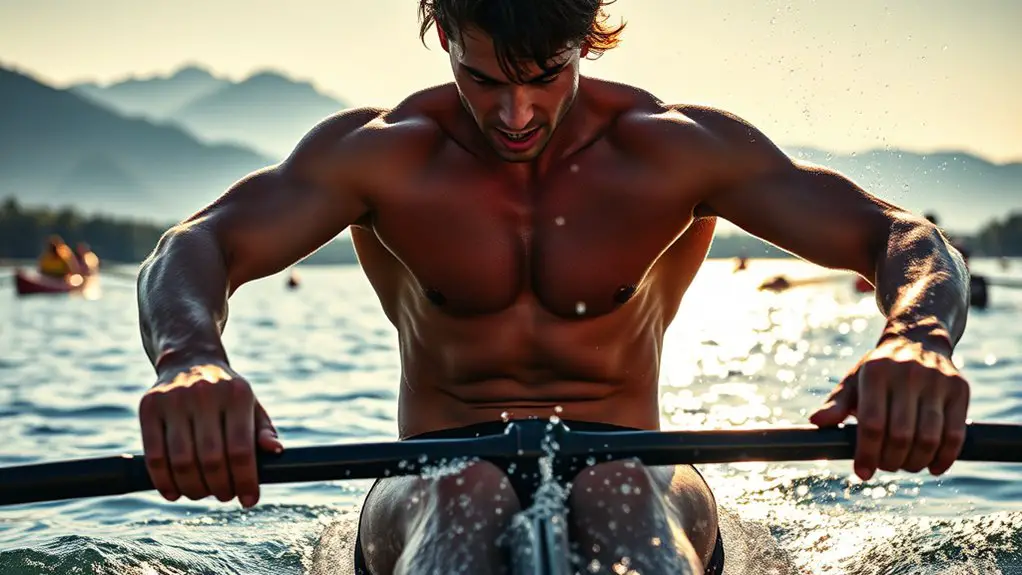
Enhanced core strength greatly impacts performance in both kayaking and rowing, offering athletes a solid foundation for power generation and stability. Improved core engagement enhances your ability to maintain balance and control during dynamic movements, allowing for more efficient strokes. By integrating stability exercises into your training regimen, you can greatly reduce the risk of injury while optimizing your overall performance.
| Benefit | Description |
|---|---|
| Improved Balance | Enhanced core strength leads to better stability in the boat. |
| Increased Power | A strong core allows for more effective transfer of power during strokes. |
| Reduced Injury Risk | Stronger core muscles support posture and alignment, minimizing injury potential. |
| Enhanced Endurance | Core stability contributes to prolonged efficiency during long races. |
Focusing on these benefits can elevate your performance, making core strength training an essential component of your preparation.
Upper Body Strength: Powering Your Stroke
To maximize your stroke efficiency in kayaking and rowing, understanding the essential muscle groups involved is vital. Incorporating targeted strength training not only enhances your technique but also plays a significant role in preventing injuries. By focusing on these elements, you can improve your overall performance on the water.
Essential Muscle Groups
Upper body strength is critical for maximizing efficiency and power in kayaking and rowing strokes. By developing essential muscle groups, you enhance your muscle endurance and functional strength, enabling you to perform at your best. Here’s a breakdown of key muscle groups:
| Muscle Group | Role in Stroke | Recommended Exercise |
|---|---|---|
| Latissimus Dorsi | Pulling force | Pull-ups |
| Trapezius | Stabilization and control | Shrugs |
| Deltoids | Shoulder movement | Overhead presses |
| Biceps | Arm flexion | Curls |
| Core Muscles | Stability and transfer of force | Planks |
Focusing on these muscle groups will give you a powerful stroke, ensuring you can paddle or row with greater efficiency and strength.
Technique and Efficiency
While many athletes focus solely on raw strength, the integration of technique and efficiency is essential for maximizing upper body power in kayaking and rowing. Technique refinement allows you to harness your strength effectively, ensuring that each stroke translates into forward motion rather than wasted energy. A well-executed stroke involves a coordinated movement pattern where your arms, shoulders, and core work synergistically, enhancing efficiency optimization. Research shows that athletes who prioritize technique see improved performance metrics, as proper body mechanics reduce drag and increase propulsion. By consistently practicing and refining your stroke technique, you’ll not only build strength but also develop the skill to apply that strength effectively, leading to significant gains in your overall performance on the water.
Injury Prevention Strategies
Refining technique not only enhances performance but also plays a significant role in injury prevention, particularly in the upper body. By focusing on proper biomechanics during paddling or rowing, you can achieve injury reduction through optimized muscle engagement and coordination. Strength training is essential, as it builds stability in the shoulder girdle and core, which are important for maintaining posture and reducing strain. Incorporating rehabilitation techniques, such as targeted stretching and mobility work, can further enhance your resilience against injuries. Regular assessments of your stroke mechanics can identify potential issues early, allowing adjustments before they lead to chronic problems. Ultimately, a well-rounded strength training program combined with strategic technique refinement is your best defense against upper body injuries.
Leg Strength: The Foundation of Speed
Leg strength is essential in kayaking and rowing, serving as the foundation for speed and power. Your ability to generate leg power directly influences your performance, especially during explosive movements like the start and sprint phases. Strong legs help you maintain a stable base, allowing for efficient force transfer to the water.
| Key Components | Importance |
|---|---|
| Squats | Build overall leg power |
| Deadlifts | Enhance posterior chain strength |
| Lunges | Improve balance and stability |
| Leg Press | Increase explosive leg strength |
| Plyometric Exercises | Develop fast-twitch muscle fibers |
Incorporating exercises that target these components will enhance your leg power, enabling you to exert maximum force with every stroke. Ultimately, building leg strength not only increases your speed but also contributes to overall endurance, making it a vital aspect of your training regimen.
Designing a Strength Training Program
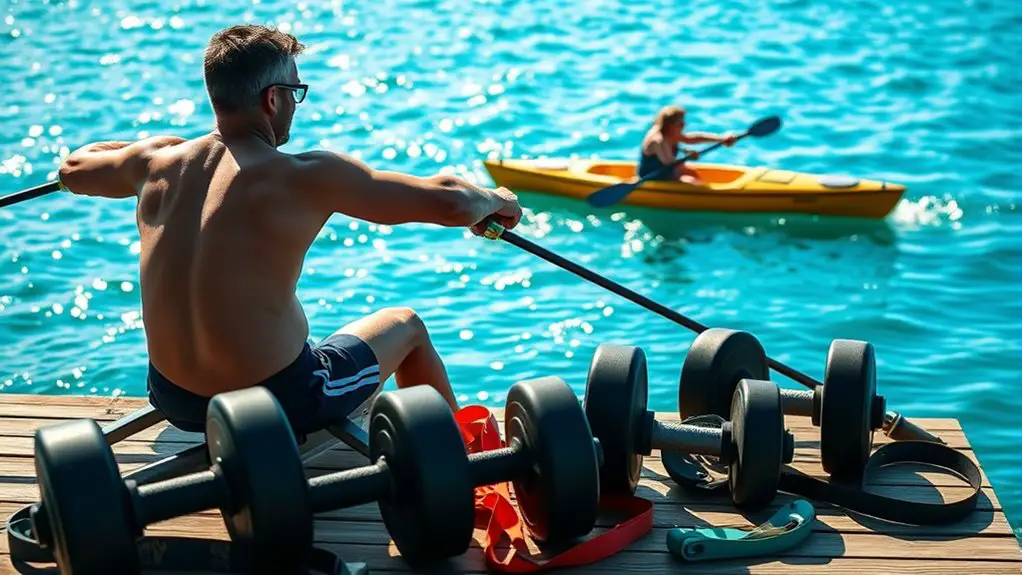
To maximize performance in kayaking and rowing, designing a strength training program that aligns with sport-specific demands is vital. Start by applying periodization principles to structure your training phases effectively. This involves varying the intensity, volume, and type of exercises over time to prevent plateaus and promote continuous adaptation.
Program customization is important; assess your individual strengths and weaknesses, focusing on exercises that enhance both upper body and core strength, as well as overall power output. Incorporate compound movements like deadlifts, bench presses, and rows, while also integrating sport-specific drills that mimic the demands of paddling and rowing.
Additionally, consider the timing of your strength training relative to your on-water sessions to guarantee peak recovery and performance. By following these guidelines, you’ll create a targeted strength training program that not only enhances your physical capabilities but also translates directly to improved performance in the water.
Integrating Strength Training With Technique Work
While strength training is essential for enhancing performance in kayaking and rowing, integrating it with technique work can lead to more effective skill development and overall improvement. This strength training integration allows you to optimize your physical capabilities while refining your technique.
To achieve this, consider the following strategies:
- Focus on specific muscle groups: Target muscles used during strokes to reinforce technique.
- Incorporate drills: Use strength exercises that mimic the mechanics of your sport, enhancing movement patterns.
- Monitor fatigue levels: Make certain strength sessions don’t compromise your technique during practice; balance is key.
- Use feedback loops: Regularly assess your technique and adjust strength training accordingly for continuous enhancement.
Common Mistakes to Avoid in Strength Training
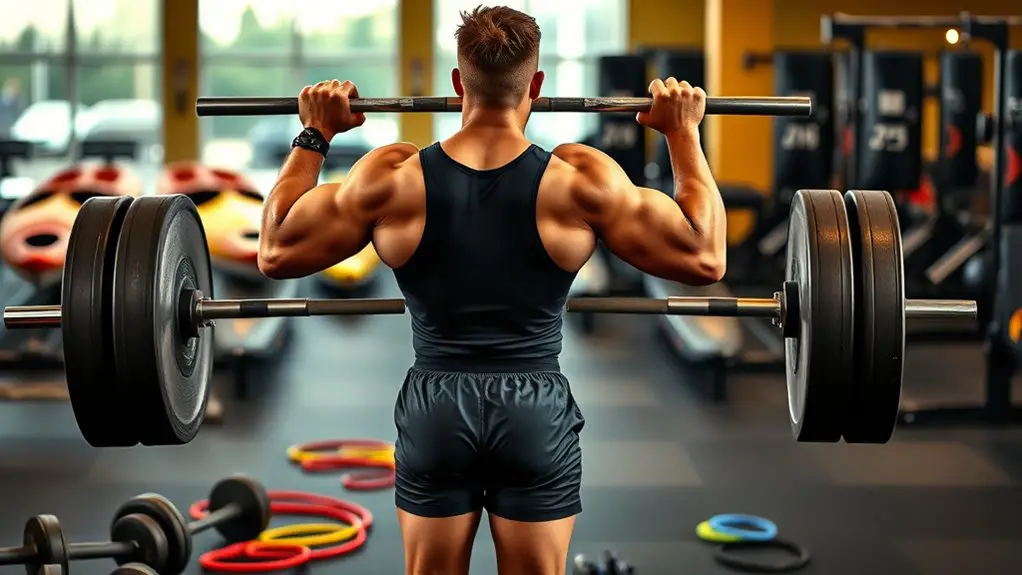
In strength training for kayaking and rowing, it’s essential to avoid common pitfalls that can hinder performance and increase injury risk. Ignoring proper technique, overtraining without adequate recovery, and neglecting core strength exercises can severely impact your effectiveness in the water. Addressing these mistakes will not only enhance your training outcomes but also promote long-term athletic sustainability.
Ignoring Proper Technique
Although you’re enthusiastic to enhance your strength for kayaking and rowing, neglecting proper technique can lead to injuries and hinder your progress. Many athletes fall prey to technique misconceptions, resulting in a technique breakdown that compromises their training effectiveness. Here are common mistakes to avoid:
- Rushed Movements: Speeding through exercises can reduce muscle engagement and increase injury risk.
- Incorrect Posture: Poor alignment during lifts can strain muscles and joints, leading to long-term issues.
- Ignoring Warm-ups: Skipping warm-ups can leave you vulnerable to strains and pulls.
- Inconsistent Form: Changing form between sets can disrupt muscle memory and lead to inefficient training.
Overtraining and Recovery
Overtraining can considerably undermine your strength training efforts in kayaking and rowing if you fail to recognize its signs and implement adequate recovery strategies. Common overtraining signs include persistent fatigue, decreased performance, and increased susceptibility to injuries. If you notice these symptoms, it’s vital to reassess your training regimen. Effective recovery techniques involve incorporating rest days, varying your workouts, and ensuring proper nutrition. Integrating active recovery sessions, like light swimming or yoga, can also promote muscle repair and mental rejuvenation. Additionally, prioritizing sleep is essential for hormone regulation and overall recovery. By addressing overtraining proactively, you’ll enhance your performance and longevity in the sport, ensuring that your strength training complements your kayaking and rowing efforts effectively.
Skipping Core Strength Exercises
Neglecting core strength exercises can considerably hinder your performance in kayaking and rowing, especially when aiming to optimize power transfer and stability. A strong core is essential for maintaining exercise balance and ensuring efficient movement. Here are some common mistakes to avoid:
- Ignoring core workouts: Failing to include planks, Russian twists, or medicine ball exercises limits your overall strength.
- Poor form: Performing exercises incorrectly can lead to injuries and reduced effectiveness.
- Lack of variety: Sticking to the same core routine can lead to plateauing; diversify your exercises to target all core muscles.
- Neglecting progression: Not gradually increasing resistance or intensity can stunt your core strength development.
Incorporating these elements will enhance your overall performance in both kayaking and rowing.
Measuring Progress and Adjusting Training
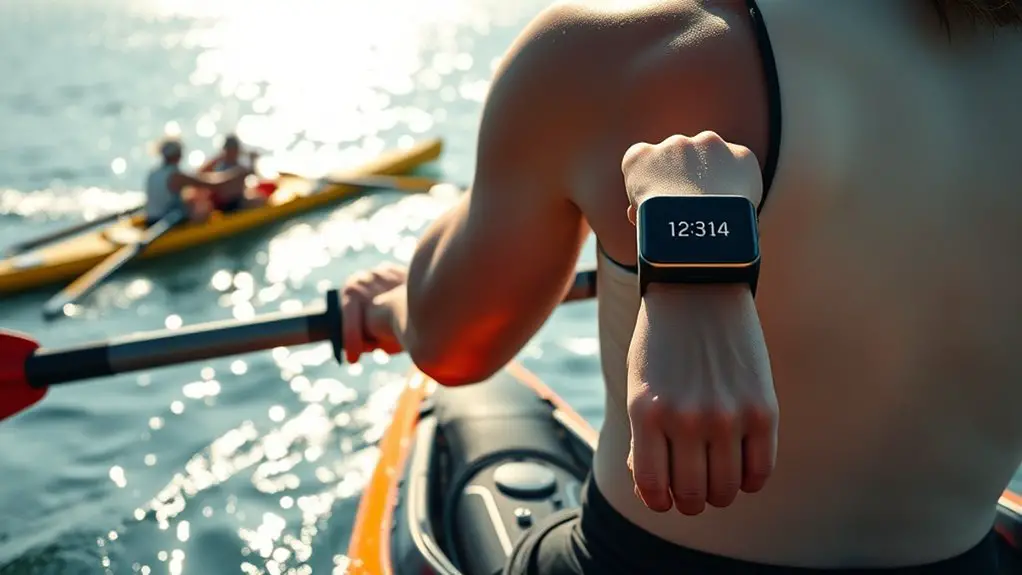
As you progress in strength training for kayaking and rowing, it’s essential to implement systematic methods for measuring your gains and adjusting your regimen accordingly. Begin with progress tracking; utilize metrics such as one-repetition maximums (1RM) for key lifts, body composition analysis, and performance evaluations on the water. Regularly scheduled assessments, like monthly testing, can provide valuable feedback on strength improvements.
Based on your tracking data, make informed training adjustments. If you notice a plateau in strength or performance, consider modifying variables such as load, volume, or exercise selection. Incorporating periodization techniques can help optimize your training stimulus and recovery. Additionally, adjust your strength training program to align with your specific competition schedule, emphasizing different muscle groups as needed. This analytical approach guarantees that your training remains effective, ultimately enhancing your overall performance in kayaking and rowing.
Success Stories: Athletes Who Benefit From Strength Training
Many elite athletes in kayaking and rowing have transformed their performance through targeted strength training, demonstrating its essential role in their success. Strength training anecdotes reveal how specific exercises enhance power output, endurance, and overall athleticism. Athlete testimonials highlight the following benefits:
- Improved stroke efficiency, enabling quicker acceleration.
- Enhanced core stability, leading to better balance in turbulent waters.
- Increased muscular endurance, allowing for sustained performance over long distances.
- Reduced injury rates, promoting longer, healthier careers.
These improvements aren’t just theoretical; they’re backed by data. Research shows that a well-structured strength program can increase force production and muscular coordination, critical factors in both kayaking and rowing. By integrating strength training, athletes not only optimize their physical capabilities but also gain a competitive edge. As you consider your training approach, these success stories serve as compelling evidence of the tangible benefits of strength training in these demanding sports.
Frequently Asked Questions
How Often Should I Incorporate Strength Training Into My Weekly Routine?
To optimize your strength training frequency, aim for at least two to three sessions per week. This allows for adequate recovery while promoting muscle growth and endurance. In your weekly workout schedule, incorporate compound exercises targeting major muscle groups. Research indicates that consistent strength training enhances overall performance and reduces injury risk. Tailor your routine to include progressive overload, ensuring that you’re continually challenging your muscles for the best results over time.
What Equipment Do I Need for Effective Strength Training at Home?
They say, “A chain is only as strong as its weakest link.” For effective strength training at home, you don’t need a fancy gym. Resistance bands are versatile, allowing for various exercises targeting different muscle groups. Combine them with bodyweight exercises like push-ups and squats for a thorough routine. Research shows that this combination enhances strength and endurance, making it a practical approach for your fitness goals without breaking the bank or requiring extensive space.
Can Strength Training Help Prevent Injuries in Kayaking and Rowing?
Yes, strength training can greatly aid in injury prevention. By enhancing muscle strength, you’re not only improving performance but also stabilizing joints and mitigating the risk of overuse injuries. Research shows that a well-structured strength program can balance muscle groups, reducing strain during intense activities. The strength benefits you gain will help maintain proper biomechanics, ensuring your body can handle the physical demands of kayaking and rowing without succumbing to injuries.
Is It Better to Lift Heavy Weights or Focus on Endurance Training?
Deciding between heavy lifting and an endurance focus is like choosing between sprinting and pacing yourself in a marathon. Heavy lifting builds strength and power, which can enhance your overall performance, while endurance training boosts stamina and cardiovascular efficiency. Research suggests that a balanced approach, incorporating both methods, often yields the best results. It’s essential to tailor your regimen based on your specific goals and the demands of your sport for peak performance.
How Can I Stay Motivated to Maintain a Strength Training Program?
To stay motivated in a strength training program, focus on goal setting and finding workout buddies. Setting specific, measurable goals creates a sense of direction and achievement. Research shows that individuals with workout partners tend to stick to their routines longer due to mutual accountability. Additionally, sharing progress with a buddy can enhance motivation, making workouts more enjoyable and less isolating. Incorporating these strategies can greatly improve your consistency and commitment.
